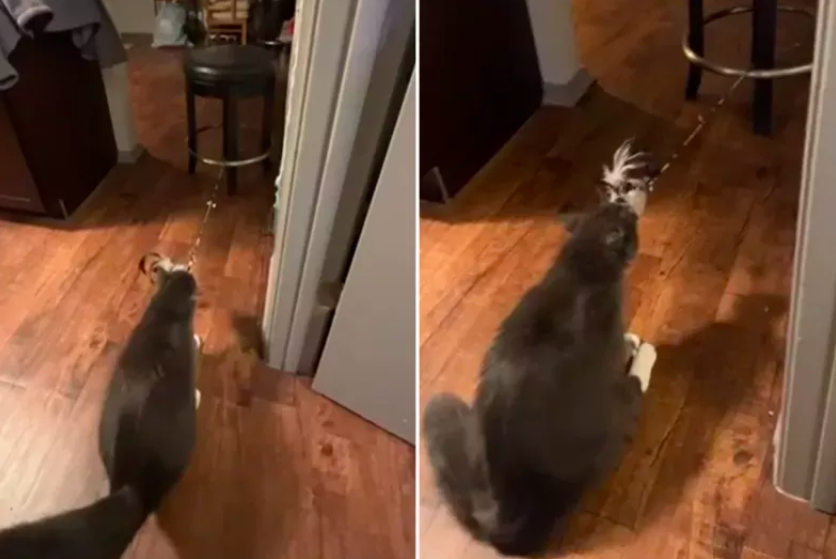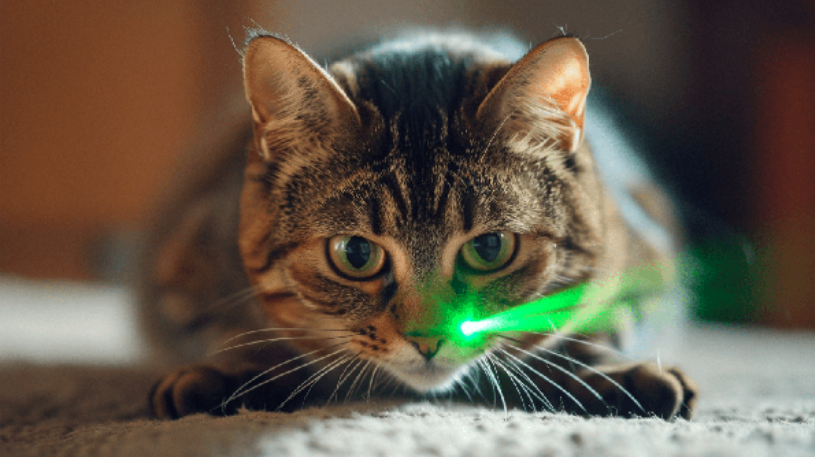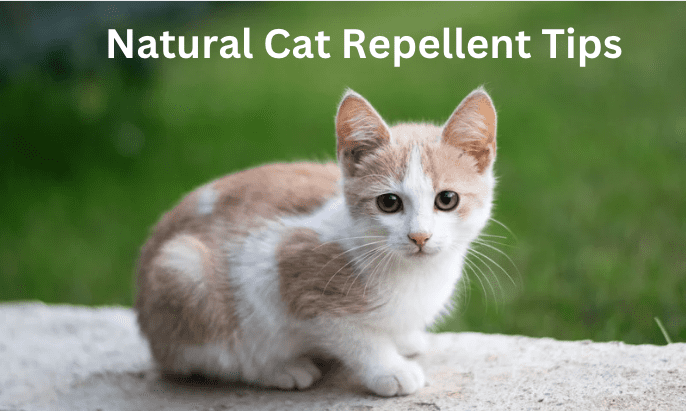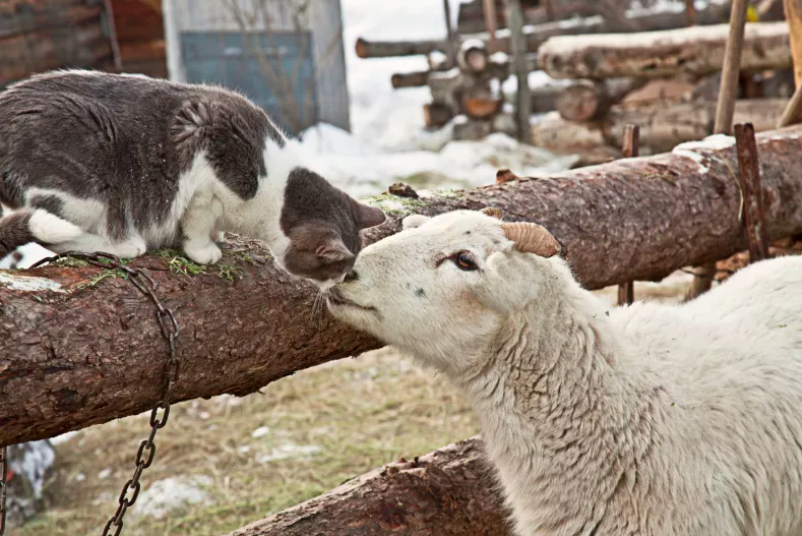Cats
The Beautiful Himalayan Cat Flame Point – A Comprehensive Guide

The Beautiful Himalayan Cat Flame Point – A Comprehensive Guide
In the world of feline beauty, few breeds capture hearts as effortlessly as the Himalayan Cat Flame Point.
With their striking appearance and gentle demeanor, these captivating felines are a testament to nature’s artistry.
In this exploration, we delve into the exquisite world of the Himalayan Cat Flame Point, unraveling their unique characteristics, history, and what makes them a beloved companion to cat enthusiasts worldwide.
Prepare to be enchanted by the allure of this remarkable feline breed.
History of Himalayan Cat Flame Point
The Himalayan Cat Flame Point is a relatively new cat breed, developed in the United States in the early 20th century.
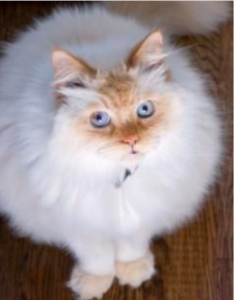
They are a cross between the Siamese and Persian breeds, resulting in a cat with a Siamese-like color pattern but a Persian-like body shape and a long, luxurious coat.
The Flame Point variation, in particular, has a pale cream-colored coat with flame-colored markings on its face, ears, tail, and legs. The Himalayan Cat Flame Point has gone through various changes since its inception.
The breed was first recognized by the Cat Fanciers’ Association (CFA) in 1957 as a separate breed from the Siamese and Persian cats. However, the breed was later grouped with the Persian breed due to its long, luxurious coat.
In the 1980s, the breed underwent a change in its breeding standards to improve its appearance and health. Breeders focused on producing cats with flatter faces, larger eyes, and shorter noses, leading to the development of the Extreme or Ultra-type Himalayan Cat Flame Point.
However, this extreme breeding practice has resulted in some health problems, including respiratory issues, eye problems, and dental problems.
Today, the Himalayan Cat Flame Point remains a popular and beloved breed among cat lovers. While their breeding standards have evolved over time, their gentle and affectionate nature has remained constant.
They make excellent pets for those looking for a loyal and loving companion, and their striking appearance is sure to turn heads and garner attention wherever they go.
Appearance of Himalayan Cat Flame Point
The Himalayan Cat Flame Point is a medium-sized cat breed that typically weighs between 7 to 12 pounds. They have a stocky and muscular build with a round face, short nose, and large, round, blue eyes.
Their fur is long, thick, and silky to the touch, requiring daily grooming to prevent matting and tangles. The Flame Point variation of the breed has a distinctive coloring.
They have pale cream-colored coats with flame-colored markings on their face, ears, tail, and legs, giving them a striking appearance.
The markings are darker on the face and ears and gradually fade to a lighter color on the body. Their coat is dense and plush, and their undercoat is usually a lighter shade than their topcoat.
Himalayan Cat Flame Point also has distinctive features, including small, rounded ears, a broad, flat head, and a short, cobby body.
Their legs are short and stocky, and their paws are round and firm. Overall, they have a regal and elegant appearance that commands attention and admiration.
Temperament of Himalayan Cat Flame Point
The Himalayan Cat Flame Point is known for its sweet, gentle, and affectionate nature, making it a popular pet for families and individuals alike. They are loyal and loving pets that enjoy cuddling up on laps and spending time with their owners.
Himalayan Cat Flame Point is not a particularly active cat breed, preferring to spend most of their day lounging around the house.
They are calm and easy-going, making them a good choice for families with children or other pets. They enjoy playing with toys and interacting with their humans, but they are not very energetic or demanding.
Himalayan Cat Flame Point is also very adaptable and can adjust well to different living arrangements. They are indoor cats that thrive in a calm and peaceful environment.
They don’t do well with loud noises or chaotic surroundings, so it’s important to provide them with a safe and comfortable space to relax in.
Overall, Himalayan Cat Flame Point is a wonderful companion for those looking for a loving, low-maintenance pet. They are sweet, gentle, and affectionate, and they make great pets for families with children or other pets.
Care and Health of Himalayan Cat Flame Point
The Himalayan Cat Flame Point is a generally healthy breed, but they are prone to certain health issues that owners should be aware of.
Proper care and attention can help prevent or manage these issues and ensure that your pet remains healthy and happy.
Care
Himalayan Cat Flame Point has a long, thick, and luxurious coat that requires daily grooming to prevent matting and tangles. Regular brushing, at least once a day, is recommended to keep their coat in good condition.
A metal comb and slicker brush can be used to remove any loose fur and keep their coat looking shiny and healthy. It’s also important to regularly trim their nails to prevent them from becoming overgrown.
In addition to regular grooming, Himalayan Cat Flame Point requires regular dental care, including teeth brushing and yearly dental check-ups, to prevent dental problems.
They are also prone to kidney disease, so it’s important to feed them a high-quality diet and monitor their water intake.
Health
Himalayan Cat Flame Point is prone to certain health issues that owners should be aware of. These health issues include:
- Polycystic kidney disease (PKD): This is a genetic condition that causes cysts to form in the kidneys, eventually leading to kidney failure. Himalayan Cat Flame Point is particularly susceptible to PKD, so it’s important to monitor their kidney function and feed them a high-quality diet to support their kidney health.
- Dental problems: Himalayan Cat Flame Point is prone to dental problems, including periodontal disease and tooth decay. Regular dental care, including teeth brushing and yearly dental check-ups, can help prevent these issues.
- Respiratory problems: Like many brachycephalic (flat-faced) cat breeds, Himalayan Cat Flame Point is prone to respiratory problems, including breathing difficulties and snoring. It’s important to keep their environment clean and free of irritants to prevent these issues.
Regular vet check-ups and a healthy diet can help prevent or manage these health issues and ensure that your Himalayan Cat Flame Point remains healthy and happy.
Training and Exercise of Himalayan Cat Flame Point
Himalayan Cat Flame Point is not a particularly active cat breed and doesn’t require a lot of exercises. However, they do enjoy playing with toys and interacting with their humans, so regular playtime and socialization are recommended.
Training a Himalayan Cat Flame Point is also relatively easy due to its gentle and affectionate nature. They respond well to positive reinforcement training, such as treats and praise, and can learn tricks and commands with patience and consistency.
Himalayan Cat Flame Point is also adaptable and can adjust well to different living arrangements. They are indoor cats that thrive in a calm and peaceful environment.
They don’t do well with loud noises or chaotic surroundings, so it’s important to provide them with a safe and comfortable space to relax in.
Overall, training and exercise for a Himalayan Cat Flame Point is relatively easy and doesn’t require a lot of effort. Regular playtime and socialization, along with positive reinforcement training, can help keep them happy and healthy.
Himalayan Cat Flame Point and Living Arrangements
Himalayan Cat Flame Point is an indoor cat that prefers a calm and peaceful living environment. They don’t require a lot of space, so they are well-suited for apartment living or small homes.
However, it’s important to provide them with a safe and comfortable space to relax in. Himalayan Cat Flame Point is a social cat breed that enjoys spending time with its humans.
They are loyal and loving pets that enjoy cuddling up on laps and spending time with their owners. They are also good with other pets, as long as they are introduced gradually and given time to adjust.
Because they are indoor cats, it’s important to provide them with plenty of toys and activities to keep them entertained and engaged.
Interactive toys, scratching posts, and climbing structures are all good options to keep your Himalayan Cat Flame Point happy and healthy.
Overall, Himalayan Cat Flame Point is a great choice for those living in apartments or small homes.
They are adaptable and easy-going, making them a good fit for a variety of living arrangements. With proper care and attention, they make wonderful companions and loyal pets.
Himalayan Cat Flame Point and Nutrition
Himalayan Cat Flame Point requires a high-quality, balanced diet to maintain their health and well-being. As a breed, they are prone to kidney disease, so it’s important to feed them a diet that supports their kidney health.
A good diet for Himalayan Cat Flame Point should be rich in protein and nutrients, with limited amounts of carbohydrates. It’s important to avoid overfeeding, as Himalayan Cat Flame Point is prone to obesity and weight-related health problems.
Canned wet food is a good option for Himalayan Cat Flame Point, as it provides moisture and helps prevent kidney problems. Dry food can also be fed, but it’s important to monitor their water intake to prevent dehydration.
It’s also important to provide fresh, clean water at all times, as Himalayan Cat Flame Point can be prone to dehydration. A cat water fountain is a good option, as it encourages them to drink more water.
Overall, feeding a high-quality diet and monitoring their water intake is important for the health and well-being of Himalayan Cat Flame Point. With proper nutrition, they can live long, healthy lives and bring years of joy and companionship to their owners.
Himalayan Cat Flame Point and Grooming
Himalayan Cat Flame Point has a long, thick, and luxurious coat that requires daily grooming to prevent matting and tangles. Regular grooming not only keeps their coat looking beautiful but also helps prevent skin problems and other health issues.
Brushing
Regular brushing is key to keeping your Himalayan Cat Flame Point’s coat in good condition. A metal comb and slicker brush can be used to remove any loose fur and prevent matting.
Start at the head and work your way down the body, being careful around the ears and tail. Pay special attention to areas prone to matting, such as the armpits and behind the ears.
Bathing
Bathing is not always necessary for Himalayan Cat Flame Point, but it can help keep their coat clean and healthy. Use a cat-specific shampoo and conditioner and rinse thoroughly to prevent skin irritation. Be careful not to get water in their ears or eyes.
Nail Trimming
Regular nail trimming is important for Himalayan Cat Flame Point to prevent overgrowth and other foot problems. Use a sharp pair of nail clippers and be careful not to cut the quick, which is the pink part of the nail that contains blood vessels.
Eye and Ear Cleaning
Himalayan Cat Flame Point has beautiful blue eyes that require regular cleaning to prevent tear staining and other eye problems. Use a damp cloth or cotton ball to clean around the eyes and remove any discharge.
Ear cleaning is also important, as Himalayan Cat Flame Point is prone to ear infections. Use a cotton ball or pad and an ear-cleaning solution recommended by your vet to clean their ears.
Dental Care
Himalayan Cat Flame Point is prone to dental problems, so regular dental care is important. Brush their teeth regularly using a toothbrush and toothpaste specifically designed for cats. Regular dental check-ups are also recommended to prevent dental problems.
Overall, regular grooming and hygiene care are essential for the health and well-being of Himalayan Cat Flame Point. With proper grooming, they can maintain their beautiful coat and live happy, healthy lives.
Himalayan Cat Flame Point and Health Issues
Like any cat breed, Himalayan Cat Flame Point is prone to certain health issues that owners should be aware of. Here are some of the most common health issues that Himalayan Cat Flame Point may face:
Polycystic Kidney Disease (PKD)
Himalayan Cat Flame Point is prone to PKD, a genetic condition that causes cysts to form in the kidneys. Over time, these cysts can damage the kidneys and lead to kidney failure. PKD is a serious condition, and there is no cure.
However, early detection and management can help slow the progression of the disease.
Respiratory Problems
Like other flat-faced cat breeds, Himalayan Cat Flame Point is prone to respiratory problems. Their short nose and flat face can cause breathing difficulties and other respiratory issues.
It’s important to keep their environment clean and free of irritants to prevent respiratory problems.
Dental Problems
Himalayan Cat Flame Point is prone to dental problems, including periodontal disease and tooth decay. Regular dental care, including teeth brushing and yearly dental check-ups, can help prevent these issues.
Eye Problems
Himalayan Cat Flame Point is prone to eye problems, including conjunctivitis, corneal ulcers, and tear duct problems. Regular eye care, including cleaning around the eyes and monitoring for any signs of discharge or inflammation, can help prevent these issues.
Obesity
Himalayan Cat Flame Point is prone to obesity, which can lead to other health problems, such as diabetes and joint problems. It’s important to monitor their diet and weight and provide them with regular exercise and playtime.
Overall, regular vet check-ups and proper care can help prevent or manage these health issues and ensure that your Himalayan Cat Flame Point remains healthy and happy.
Conclusion
In conclusion, the Himalayan Cat Flame Point is a beautiful and gentle cat breed that makes a wonderful companion for those looking for a loving, low-maintenance pet.
They have a sweet and affectionate temperament, are easy to train, and don’t require a lot of exercises. Proper care and attention are important for the health and well-being of Himalayan Cat Flame Point.
Regular grooming, dental care, and vet check-ups can help prevent or manage health issues that the breed is prone to, such as PKD, respiratory problems, dental problems, eye problems, and obesity.
Overall, Himalayan Cat Flame Point is a great choice for families with children or other pets, as they are loyal and loving pets that enjoy spending time with their humans.
With proper care and attention, they can live long, healthy lives and bring years of joy and companionship to their owners.
Questions People Also Ask: (FAQs)
What is the lifespan of a Himalayan Cat Flame Point?
Himalayan Cat Flame Point typically lives for 9 to 15 years, although some may live longer with proper care and attention.
Do Himalayan Cat Flame Points get along with other pets?
Yes, Himalayan Cat Flame Point is generally good with other pets, as long as they are introduced gradually and given time to adjust.
How much do Himalayan Cat Flame Points weigh?
Himalayan Cat Flame Point typically weighs between 7 to 12 pounds.
What kind of diet should I feed my Himalayan Cat Flame Point?
Himalayan Cat Flame Point requires a high-quality diet that is rich in protein and nutrients to maintain their health and well-being. It’s important to feed them a balanced diet that meets their nutritional needs, as well as monitoring their water intake to prevent kidney problems.
Do Himalayan Cat Flame Points shed a lot?
Yes, Himalayan Cat Flame Point sheds a moderate amount, so daily grooming is recommended to keep their coat in good condition.
Are Himalayan Cat Flame Points good with children?
Yes, Himalayan Cat Flame Point is generally good with children, as long as they are socialized properly and treated with respect.
Do Himalayan Cat Flame Points require a lot of exercises?
No, Himalayan Cat Flame Point is not a particularly active cat breed and doesn’t require a lot of exercises. However, they do enjoy playing with toys and interacting with their humans, so regular playtime and socialization are recommended.
We appreciate you for taking the time to read this article!
Finally, we hope you found this article interesting? And what do you think about ”The Beautiful Himalayan Cat Flame Point – A Comprehensive Guide!?”
Please feel free to share or inform your friends about this article and this site, thanks!
And let us know if you observe something that isn’t quite right.
Cats
Clever Cats: Breeds That Learn Fast
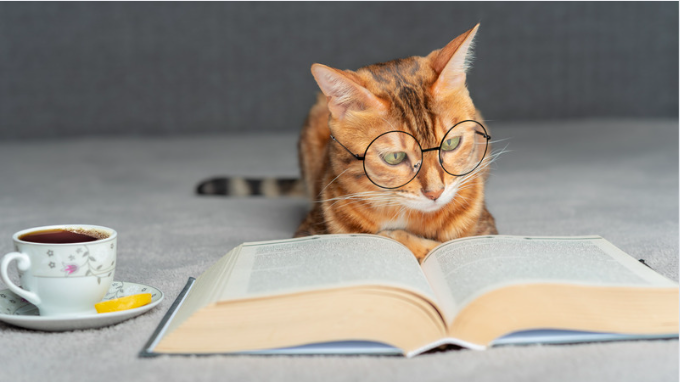
Clever Cats: Breeds That Learn Fast
Cats have always fascinated us with their agility, independence, and sometimes enigmatic behavior. Among the vast array of feline breeds, some stand out for their remarkable intelligence and ability to learn quickly.
In this article, we will delve into the world of these exceptional cat breeds, exploring their unique characteristics, training capabilities, and what makes them such quick learners.
Whether you’re a seasoned cat owner or considering adopting a new feline friend, this comprehensive guide will help you understand the breeds that are not only intelligent but also a joy to train.
Why Intelligence Matters in Cats
Understanding Feline Intelligence
Feline intelligence is a multi-faceted trait that encompasses problem-solving abilities, social learning, and adaptability. Unlike dogs, cats often showcase their intelligence in more subtle ways, such as manipulating objects to get what they want or learning routines and commands.
Benefits of Owning Intelligent Cats
Owning an intelligent cat comes with several benefits. These cats are more interactive and engaging, making them excellent companions. They can learn tricks, follow commands, and even understand basic household rules, which makes living with them more enjoyable and less challenging.
Top Cat Breeds Known for Their Intelligence
Abyssinian
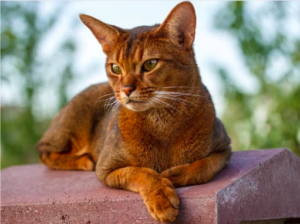
Overview
The Abyssinian is often hailed as one of the smartest cat breeds. Known for their curiosity and playful nature, Abyssinians are quick learners who thrive on mental stimulation.
Training and Activities
Abyssinians are highly trainable and enjoy interactive toys and puzzle feeders. They can learn tricks such as fetching and even walking on a leash. Their love for heights means they appreciate cat trees and climbing structures.
Siamese
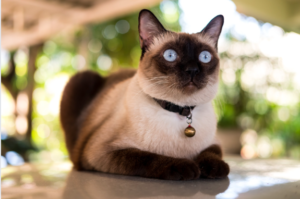
Overview
Siamese cats are not only intelligent but also highly vocal and sociable. They form strong bonds with their owners and are always eager to engage in activities.
Training and Activities
Siamese cats are quick to learn tricks and commands. They enjoy interactive play and can be trained to perform simple tasks like opening doors or retrieving items. Their vocal nature also makes them responsive to verbal cues.
Bengal
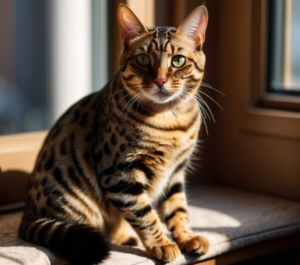
Overview
Bengals are known for their striking appearance and high energy levels. Their intelligence is reflected in their ability to solve problems and learn complex tasks.
Training and Activities
Bengals enjoy activities that challenge their minds, such as agility courses and puzzle toys. They can be trained to walk on a leash and perform tricks. Providing them with interactive playtime helps in channeling their energy positively.
Burmese
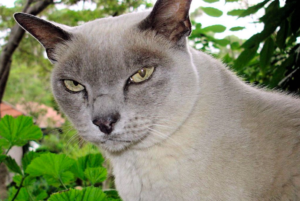
Overview
Burmese cats are affectionate, people-oriented, and intelligent. They enjoy being involved in family activities and can be trained to follow various commands.
Training and Activities
Burmese cats are quick learners and respond well to positive reinforcement. They enjoy learning tricks, playing fetch, and interactive games that stimulate their minds.
Scottish Fold
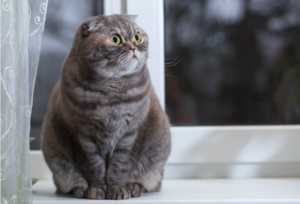
Overview
Scottish Folds are known for their distinctive folded ears and sweet demeanor. Despite their calm appearance, they are intelligent and can learn quickly.
Training and Activities
Scottish Folds enjoy interactive toys and games. They can learn tricks and commands and appreciate routines that keep their minds engaged.
Training Tips for Intelligent Cats
Start Early
Begin training your cat as early as possible. Kittens are more receptive to learning new behaviors and routines.
Use Positive Reinforcement
Reward your cat with treats, praise, or playtime whenever they successfully perform a desired behavior. Positive reinforcement strengthens the association between the action and the reward.
Keep Sessions Short and Fun
Cats have shorter attention spans than dogs, so keep training sessions brief and enjoyable. Incorporate playtime to make learning fun for your cat.
Be Patient and Consistent
Patience and consistency are key when training cats. Repeat commands and routines regularly, and avoid punishing your cat for mistakes. Consistency helps reinforce learning and builds trust.
Challenges of Training Intelligent Cats
Independence and Stubbornness
Intelligent cats can sometimes be independent and stubborn. They might choose to ignore commands if they are not in the mood, so it’s important to understand their behavior and work with it.
Need for Mental Stimulation
Highly intelligent cats require constant mental stimulation. Boredom can lead to behavioral issues, so ensure they have plenty of toys, activities, and interaction to keep their minds engaged.
Managing High Energy Levels
Breeds like Bengals have high energy levels that need to be managed. Providing them with enough physical and mental exercise is crucial to prevent destructive behavior.
Living with Intelligent Cats
Creating an Enriched Environment
An enriched environment is essential for intelligent cats. This includes a variety of toys, climbing structures, scratching posts, and interactive feeders to keep them stimulated.
Social Interaction
Intelligent cats thrive on social interaction. Spend quality time playing, training, and simply bonding with your cat to ensure they feel valued and engaged.
Understanding Their Needs
Each intelligent breed has its own unique needs and preferences. Understanding these and catering to them will help you build a strong and positive relationship with your cat.
Conclusion
Owning an intelligent cat can be an incredibly rewarding experience. These quick learners bring joy, challenge, and companionship to their owners. By understanding their unique characteristics and providing the right environment and training, you can foster a deep and fulfilling relationship with your feline friend.
Whether you choose an Abyssinian, Siamese, Bengal, Burmese, or Scottish Fold, you’re sure to enjoy the remarkable intelligence and personality they bring into your home.
Frequently Asked Questions (FAQs)
What makes a cat breed intelligent?
Intelligent cat breeds often show high levels of problem-solving abilities, adaptability, and social learning. They can quickly learn commands, tricks, and routines.
Can all cats be trained?
While some breeds are more receptive to training than others, all cats can be trained to some extent. Patience, consistency, and positive reinforcement are key to successful training.
What are the best toys for intelligent cats?
Interactive toys, puzzle feeders, and climbing structures are ideal for intelligent cats. These toys provide mental stimulation and keep them engaged.
How do I keep my intelligent cat from getting bored?
Provide a variety of toys, engage in regular playtime, and introduce new activities regularly. Rotating toys and creating an enriched environment also help prevent boredom.
Are intelligent cats more difficult to care for?
Intelligent cats can be more demanding in terms of mental stimulation and interaction. However, with the right approach and environment, they can be delightful companions.
We appreciate you for taking the time to read this article!
Finally, we hope you found this article interesting? And what do you think about ”Clever Cats: Breeds That Learn Fast!?”
Please feel free to share or inform your friends about this article and this site, thanks!
And let us know if you observe something that isn’t quite right.
Cats
The Enchanting Scottish Fold: A Guide to the Adorable Feline with Folded Ears
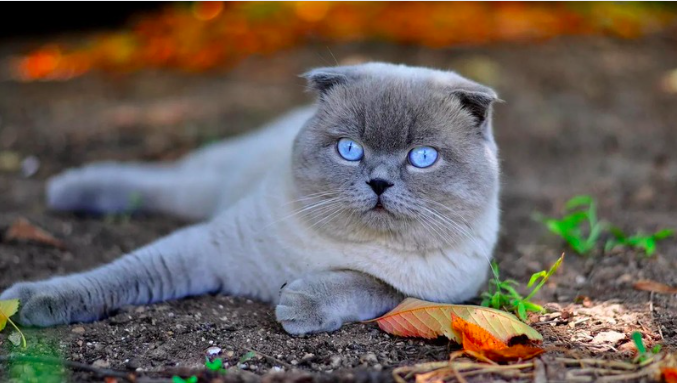
The Enchanting Scottish Fold: A Guide to the Adorable Feline with Folded Ears
Welcome to the world of the Scottish Fold cat, where charm and curiosity meet in an irresistibly adorable package. With their distinctive folded ears and sweet expression, Scottish Folds have captured the hearts of cat lovers around the world. Originally hailing from Scotland, these cats are known for their gentle demeanor, playful nature, and loving personality.
In this comprehensive guide, we will delve into the fascinating world of Scottish Fold cats, exploring their history, physical characteristics, personality traits, and care requirements. Whether you’re a seasoned cat owner or considering adding a feline friend to your family, the Scottish Fold’s unique charm and affectionate nature make them a delightful addition to any home. Join us as we unravel the enchanting tale of the Scottish Fold cat and discover why they are such beloved companions.
Fold
Overview
The Scottish Fold cat is a charming and distinctive breed known for its unique folded ears and sweet expression. Originating from Scotland in the 1960s, these cats have captured the hearts of many with their endearing appearance and affectionate nature. Scottish Folds are known for their gentle and loving temperament, making them wonderful companions for families and individuals alike.
History and Origins
The Scottish Fold breed traces its roots back to a white barn cat named Susie, who was found in Scotland in the early 1960s. Susie had a unique genetic mutation that caused her ears to fold forward, giving her an owl-like appearance. This trait was passed down to her kittens, and thus, the Scottish Fold breed was born. The breed quickly gained popularity for its distinctive look and friendly demeanor, and it was officially recognized by cat registries in the 1970s.
Physical Characteristics
- Folded Ears: The most distinctive feature of the Scottish Fold is its folded ears, which give the cat a sweet and owl-like appearance. Not all Scottish Folds have folded ears; some may have straight ears, known as “straights,” which are also common in the breed.
- Coat and Colors: Scottish Folds can have either a short or long coat, both of which are dense and plush. They come in a variety of colors and patterns, including tabby, tortoiseshell, and solid colors like white, black, and blue.
- Body Structure: Scottish Folds are medium-sized cats with a rounded appearance. They have sturdy bodies, round faces, and large, expressive eyes that give them a sweet and gentle expression.
Personality and Behavior
Scottish Folds are known for their calm and laid-back demeanor. They are affectionate cats that enjoy being around people and are often described as “lap cats” due to their love of cuddling. They are also known for their playful nature and enjoy interactive toys and games. Scottish Folds are generally good with children and other pets, making them a great choice for families.

Health and Care
- Ear Care: Due to their folded ears, Scottish Folds may be prone to ear infections. It’s important to regularly check and clean their ears to prevent issues.
- Grooming: Scottish Folds have dense coats that require regular grooming to prevent matting and tangling. Weekly brushing is usually sufficient to keep their coat in good condition.
- Health Concerns: Scottish Folds are generally healthy, but they may be prone to certain genetic conditions, including a skeletal disorder known as osteochondrodysplasia. Responsible breeding practices can help minimize the risk of these health issues.
Training and Activities
Scottish Folds are intelligent cats that can be trained to perform tricks and commands. They enjoy interactive play and benefit from toys that stimulate their minds and bodies. Providing them with scratching posts and other outlets for their natural behaviors can help keep them happy and healthy.
Compatibility with Families and Other Pets
Scottish Folds are known for their gentle and affectionate nature, making them great companions for families. They are good with children and other pets, including dogs, and can adapt well to different environments. Their loving and sociable nature makes them a popular choice for households looking for a friendly and affectionate pet.
Conclusion
The Scottish Fold cat is a unique and charming breed known for its folded ears and sweet expression. With their gentle demeanor and affectionate nature, Scottish Folds make wonderful companions for families and individuals alike. Whether you’re looking for a lap cat to cuddle with or a playful friend to keep you entertained, the Scottish Fold cat is sure to bring joy and companionship to your home.
FAQs about Scottish Fold Cats
Why do Scottish Folds have folded ears?
Scottish Folds have a genetic mutation that affects the cartilage in their ears, causing them to fold forward. This unique trait gives them their distinctive appearance.
Are Scottish Folds prone to ear problems due to their folded ears?
Yes, Scottish Folds may be more prone to ear infections due to the fold in their ears, which can trap dirt and moisture. Regular cleaning and monitoring of their ears can help prevent issues.
Do Scottish Folds have any health issues associated with their folded ears?
Scottish Folds may be prone to a condition called osteochondrodysplasia, which affects the development of their cartilage and bones. Responsible breeding practices can help reduce the risk of this condition.
Are Scottish Folds good with children and other pets?
Scottish Folds are known for their gentle and friendly nature, making them good companions for families with children and other pets. They enjoy socializing and being part of the family.
Do Scottish Folds require a lot of grooming?
Scottish Folds have dense coats that require regular grooming to prevent matting and tangles. Weekly brushing is recommended to keep their coat in good condition.
We appreciate you for taking the time to read this article!
Finally, we hope you found this article interesting? And what do you think about ”The Enchanting Scottish Fold: A Guide to the Adorable Feline with Folded Ears!?”
Please feel free to share or inform your friends about this article and this site, thanks!
And let us know if you observe something that isn’t quite right.
Cats
The Enchanting Burmese Cat: Affectionate, Playful, and Loyal
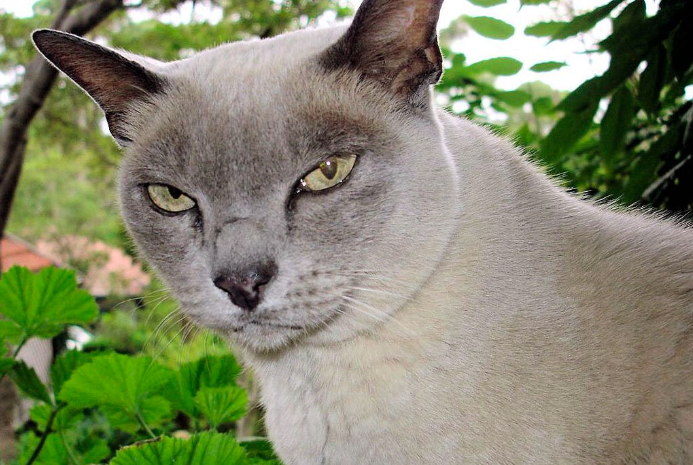
The Enchanting Burmese Cat: Affectionate, Playful, and Loyal
Enter the world of the Burmese cat, where elegance meets affection in a charming feline companion. Originating from the temples of Burma, these cats have captured the hearts of cat lovers worldwide with their striking appearance and loving nature. With their sleek coats, expressive eyes, and playful demeanor, Burmese cats are not just pets; they are cherished members of the family.
In this comprehensive guide, we delve into the captivating world of Burmese cats, exploring their history, physical characteristics, personality traits, and care requirements. Whether you’re a seasoned cat owner or considering adding a feline friend to your family, the Burmese cat’s unique blend of beauty, intelligence, and affection is sure to captivate you. Join us as we unravel the enchanting tale of the Burmese cat and discover why they are such beloved companions.
Burmese
Overview
The Burmese cat is a breed known for its striking appearance and affectionate nature. Originating from Burma (now Myanmar), these cats are renowned for their sleek, muscular bodies, expressive eyes, and silky coats. Burmese cats are often described as “people-oriented,” as they form strong bonds with their human companions and enjoy being part of the family. Their playful and curious nature makes them delightful companions for both children and adults alike.
History and Origins
The history of the Burmese cat can be traced back to ancient Burma, where they were considered sacred and kept by monks in temples. They were later brought to the West in the early 20th century and quickly gained popularity for their striking appearance and affectionate personality. The breed has since become a favorite among cat enthusiasts worldwide, known for its loving and loyal nature.
Physical Characteristics
- Coat and Colors: Burmese cats have short, sleek coats that lie close to the body. They come in a variety of colors, including sable, champagne, blue, and platinum. The coat is soft and silky to the touch, adding to the breed’s overall charm.
- Body Structure: Burmese cats are medium-sized with a muscular build. They have rounded heads, large, expressive eyes, and short, straight noses. Their compact bodies give them a sturdy appearance, and they move with grace and agility.
- Eyes and Ears: Their eyes are one of their most striking features, being large, expressive, and usually a deep, rich color that complements their coat. Their ears are medium-sized, slightly rounded at the tips, and set wide apart on the head.
Personality and Behavior
Burmese cats are known for their affectionate and sociable nature. They are often described as “dog-like” due to their tendency to follow their owners around the house and seek out human companionship. They are also highly intelligent and enjoy interactive play, making them great companions for families with children or other pets.
In addition to their affectionate nature, Burmese cats are also known for their vocalizations. They have a soft, sweet voice that they use to communicate with their owners, often engaging in “conversations” and expressing their needs and desires.
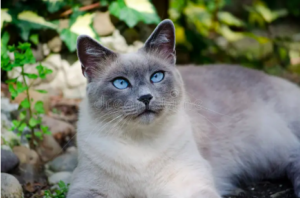
Health and Care
- Grooming: Burmese cats have short coats that require minimal grooming. Weekly brushing is usually sufficient to remove loose hair and keep their coat shiny. They also benefit from regular dental care to prevent oral health issues.
- Diet: A high-quality, balanced diet is essential for maintaining the health and vitality of Burmese cats. They should be fed a diet that is appropriate for their age, size, and activity level to ensure they receive the nutrients they need.
- Health Concerns: Burmese cats are generally healthy, but they can be prone to certain genetic conditions such as hypertrophic cardiomyopathy (HCM) and diabetes. Regular veterinary check-ups and a healthy diet can help manage these risks.
Training and Activities
Burmese cats are intelligent and can be trained to perform various tricks and commands. They enjoy interactive play and thrive on mental stimulation. Providing them with toys, puzzle feeders, and opportunities for play can help keep them entertained and prevent boredom.
Compatibility with Families and Other Pets
Burmese cats are known for their loving and social nature, making them great companions for families. They get along well with children and other pets, including dogs, as long as they are properly introduced. Their affectionate demeanor and playful nature make them a popular choice for households looking for a friendly and engaging pet.
Conclusion
The Burmese cat is a breed beloved for its affectionate nature, striking appearance, and playful personality. Whether you are looking for a loyal companion or a playful friend, the Burmese cat is sure to bring joy and warmth to your home. With their loving nature and sociable demeanor, Burmese cats make wonderful pets for families and individuals alike, enriching their lives with their presence and affection.
FAQs about Burmese Cats
What is the temperament of a Burmese cat like?
Burmese cats are known for their affectionate and social nature. They are often described as “dog-like” due to their loyalty and tendency to follow their owners around the house. They enjoy being involved in family activities and form strong bonds with their human companions.
Are Burmese cats good with children and other pets?
Yes, Burmese cats are generally good with children and other pets. They are playful and enjoy interactive play, making them great companions for families with children. They also get along well with other pets, including dogs, especially if they are introduced properly.
Do Burmese cats require a lot of grooming?
Burmese cats have short, sleek coats that require minimal grooming. Weekly brushing is usually sufficient to remove loose hair and keep their coat shiny. They also benefit from regular dental care to prevent oral health issues.
Are Burmese cats vocal?
Burmese cats are known for their soft, sweet voice, but they are not excessively vocal. They use their voice to communicate with their owners, often engaging in “conversations” and expressing their needs and desires.
What kind of environment is best for a Burmese cat?
Burmese cats thrive in environments where they have plenty of opportunities for play and interaction. They enjoy being part of the family and should have access to toys, scratching posts, and other enrichment activities. They also enjoy having access to outdoor enclosures or safe outdoor spaces where they can explore and indulge their natural instincts.
We appreciate you for taking the time to read this article!
Finally, we hope you found this article interesting? And what do you think about ”The Enchanting Burmese Cat: Affectionate, Playful, and Loyal!?”
Please feel free to share or inform your friends about this article and this site, thanks!
And let us know if you observe something that isn’t quite right.
-

 Pet Care2 years ago
Pet Care2 years agoThe Best Dog Collars For 2022
-

 Dogs2 years ago
Dogs2 years agoBichon Frise: The Happy, Playful, and Cuddly Companion
-

 Trending Pet Stories1 year ago
Trending Pet Stories1 year ago2023 ‘World’s Ugliest Dog’ Winner: Scooter’s Tale of Resilience
-

 Animals3 years ago
Animals3 years agoAre There Animals Having Down Syndrome?
-

 Pets2 years ago
Pets2 years agoThe Fascinating World Of The Red Chameleon
-

 Dogs3 years ago
Dogs3 years agoTop 10 Most Popular Dog Breeds According To AKC.
-

 Dogs3 years ago
Dogs3 years ago21 Dog Breeds That Resemble Bears Or Teddy Bears!
-

 Dogs3 years ago
Dogs3 years agoEskimo Dogs from Canada – What Are They? – Find Out!


